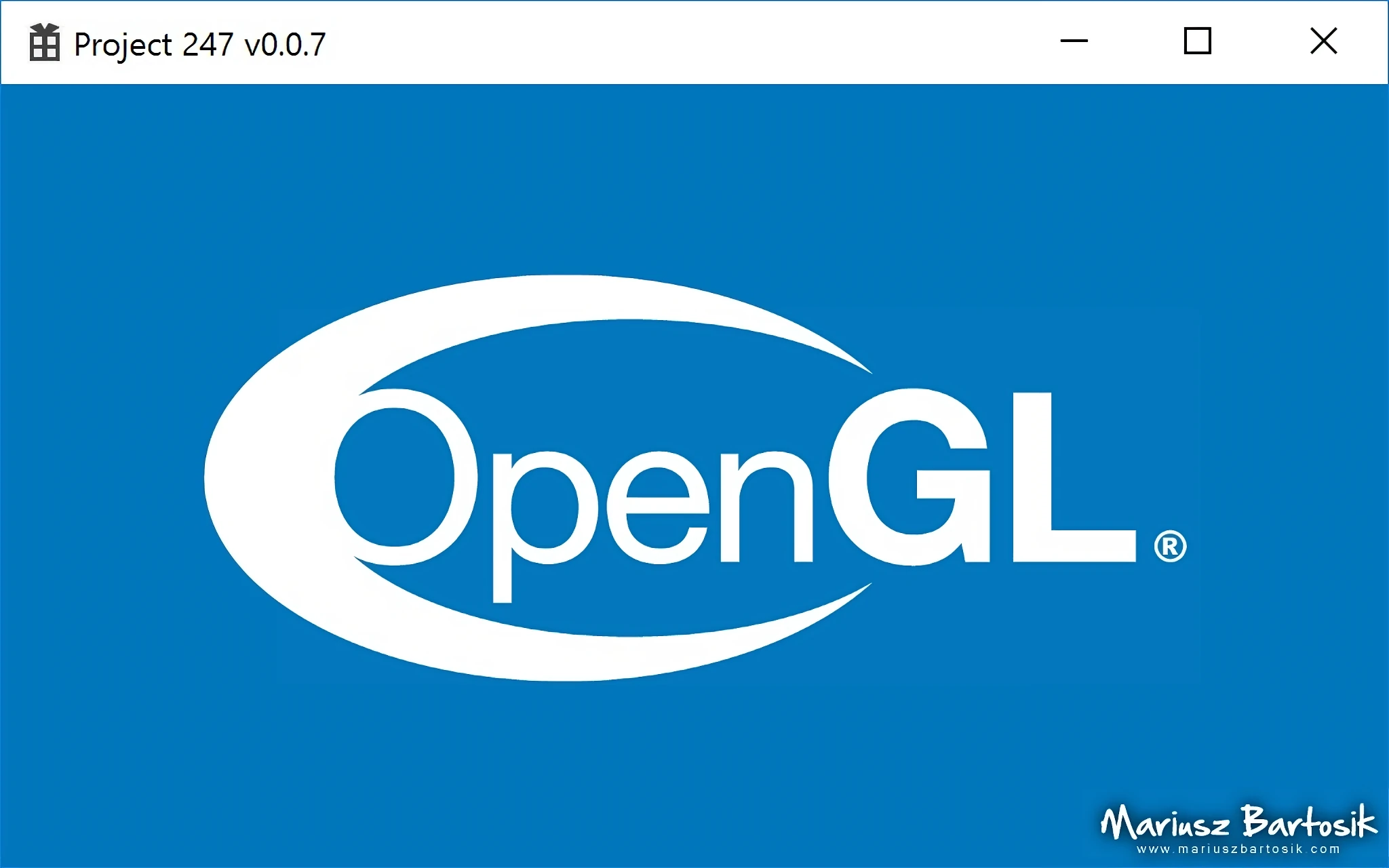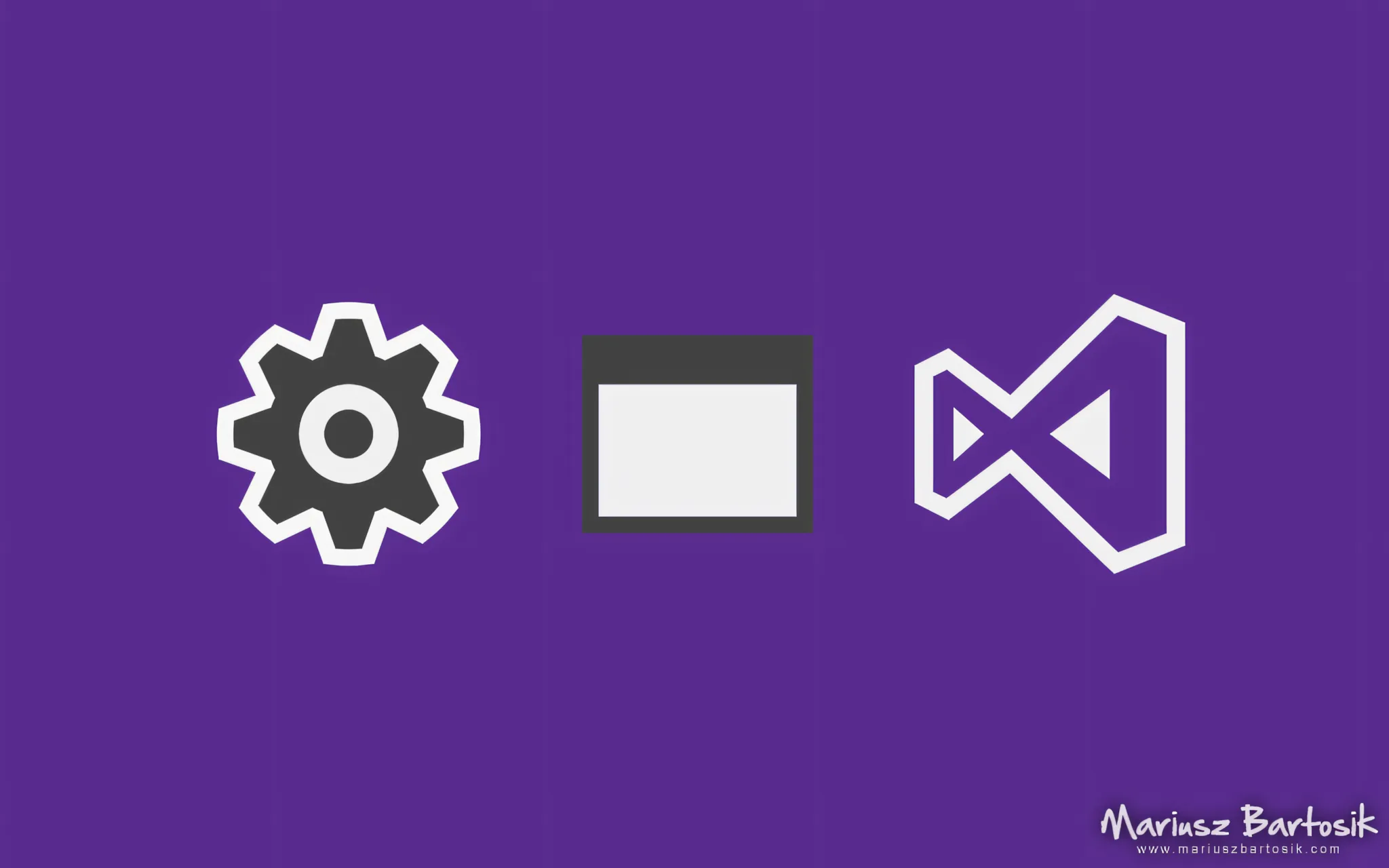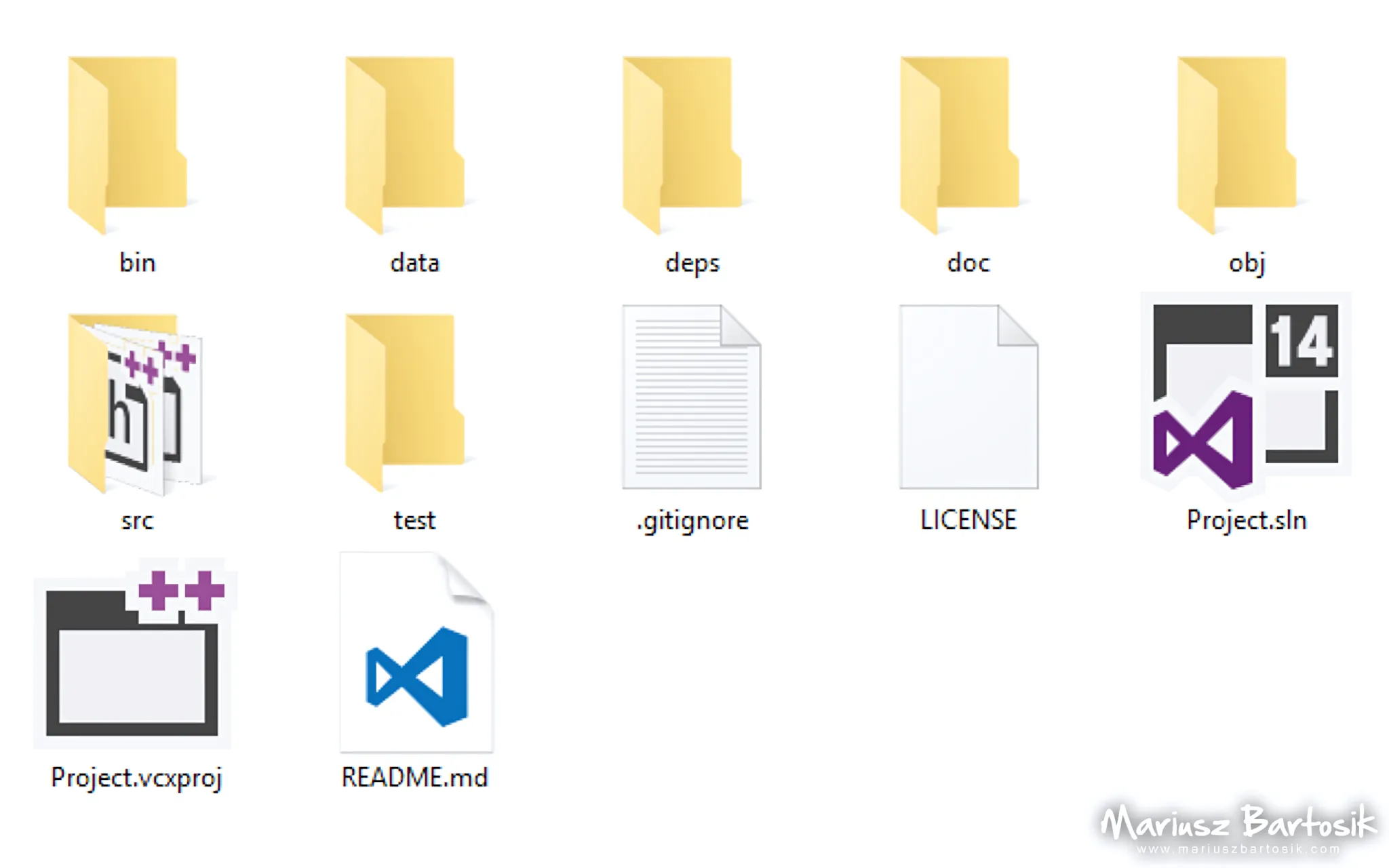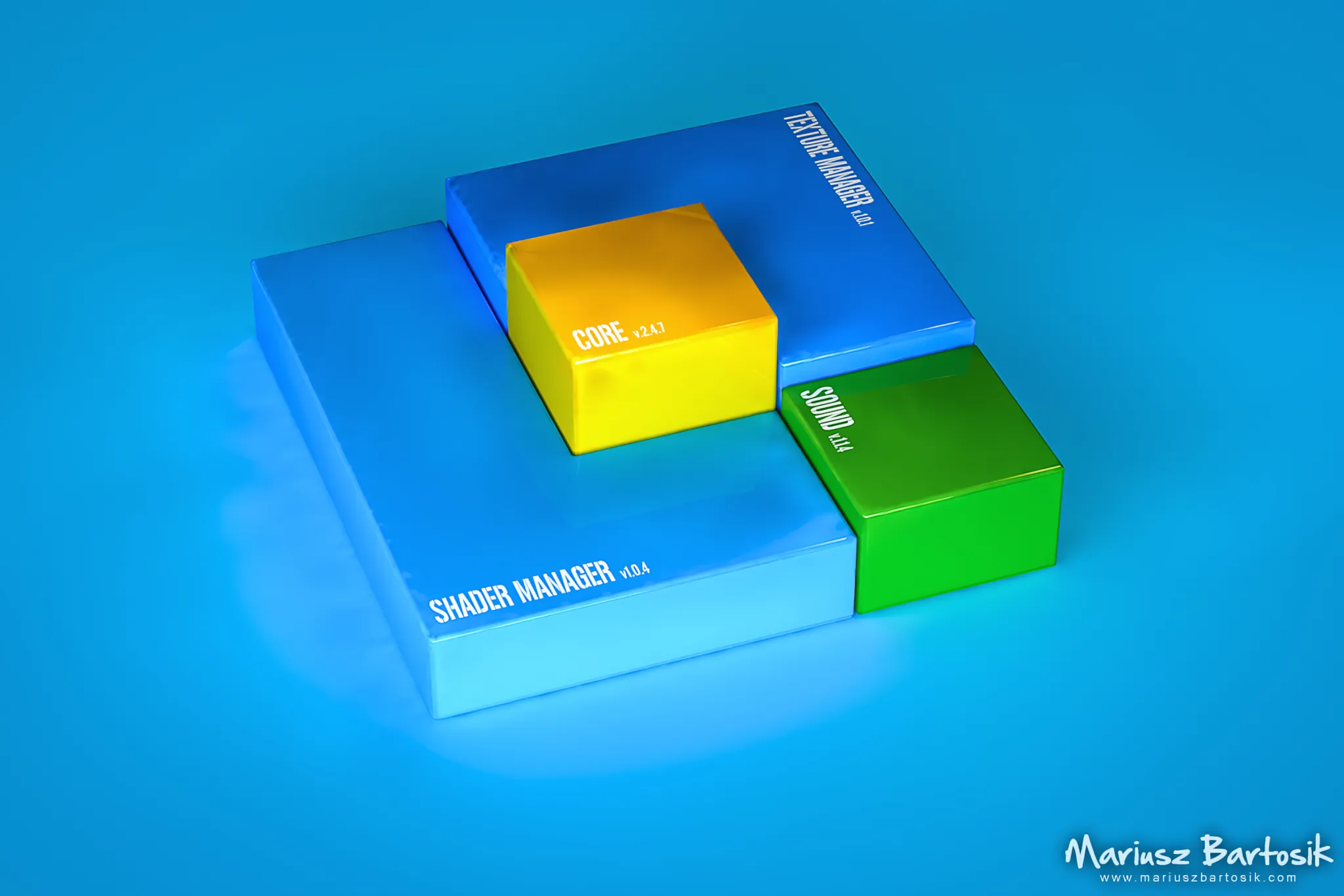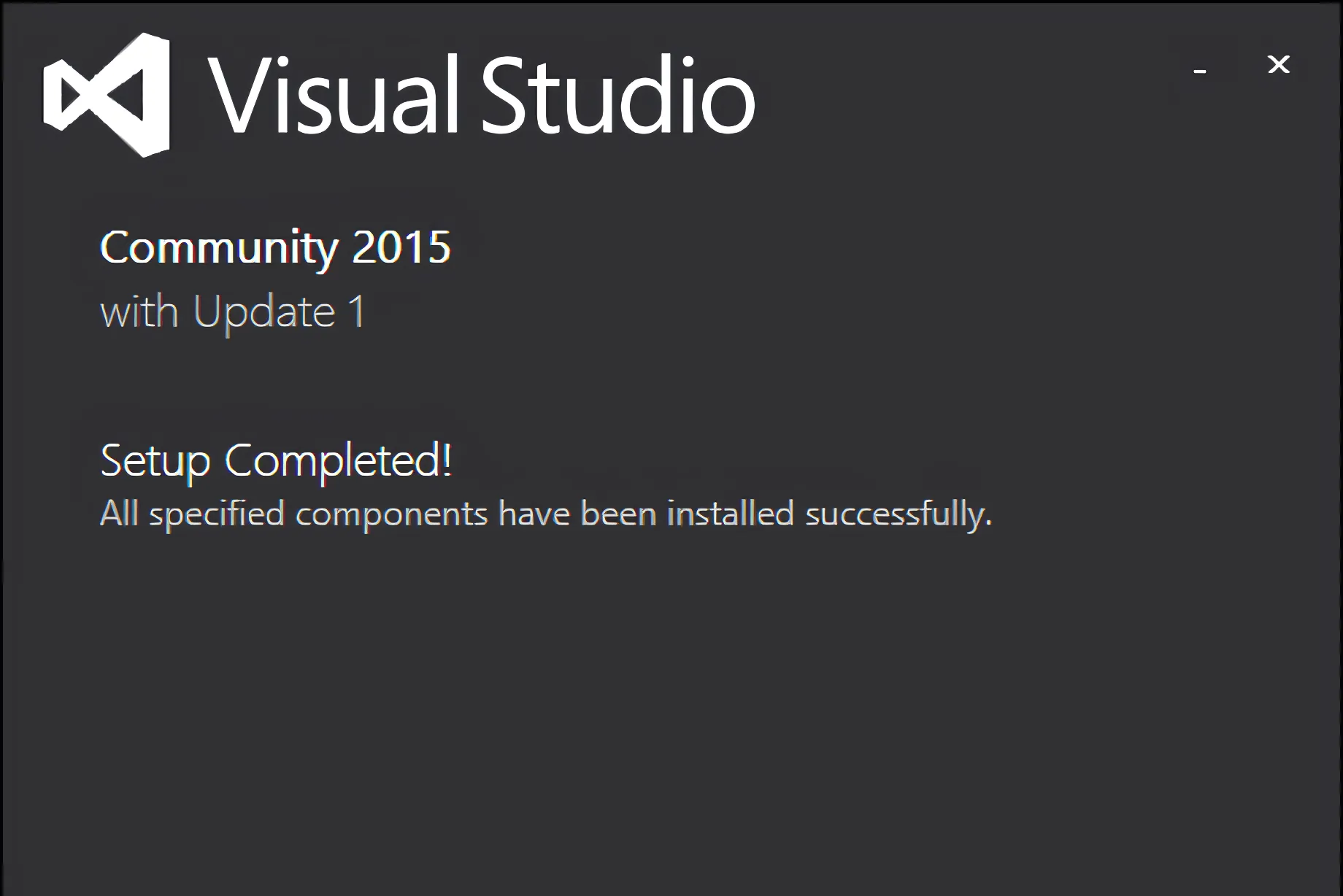If you want to open an OpenGL window, most of tutorials and books will tell you to use GLFW, FreeGLUT or SDL framework. Just call glfwInit(), glfwCreateWindow() and you are done. However, if you need to write a size-limited executable or simply don’t want to create another dependency, you have to take care of this by yourself. This is how to do it “the hard way”.
The directory structure described in the previous article can be used with any IDE and compiler. Here’s how to configure Visual Studio project for it.
When you work on some bigger project, it is important to properly organize its directory structure. Most of the time, you have to prepare project directory structure yourself, as an IDE will create only a basic solution for you.
It’s time to look inside the main executable file, and plan what we want to put there. The architecture of a demo framework is a bit similar to a game engine one. In fact, there are demos created with tools like Unity 3D.
Before we begin to sketch the internal structure of our demo, let’s take a look on how to organise files in the final archive. You will also need to decide if you want to protect the data files (textures, the soundtrack and so on) or make them freely accessible to others. Let’s review some real life examples.
I’ve been preparing to write about general architecture of our demo when I noticed, that some of the tools required to develop this project need to be updated on my mini PC. So, let’s set up the environment first.
It’s time to write about the project I’m going to develop and what I would like to talk about in forthcoming posts. The basic idea is to create a demo.
